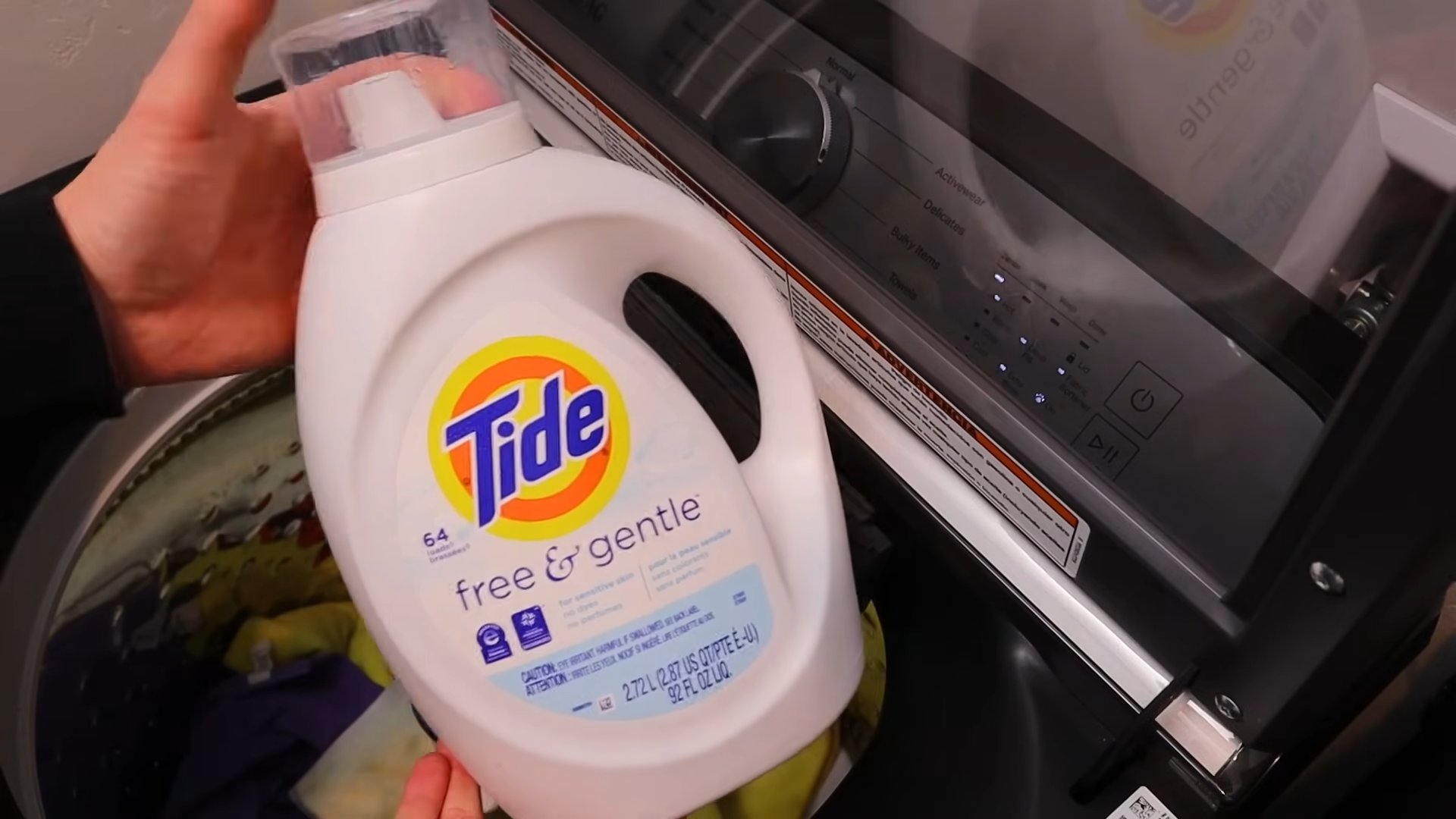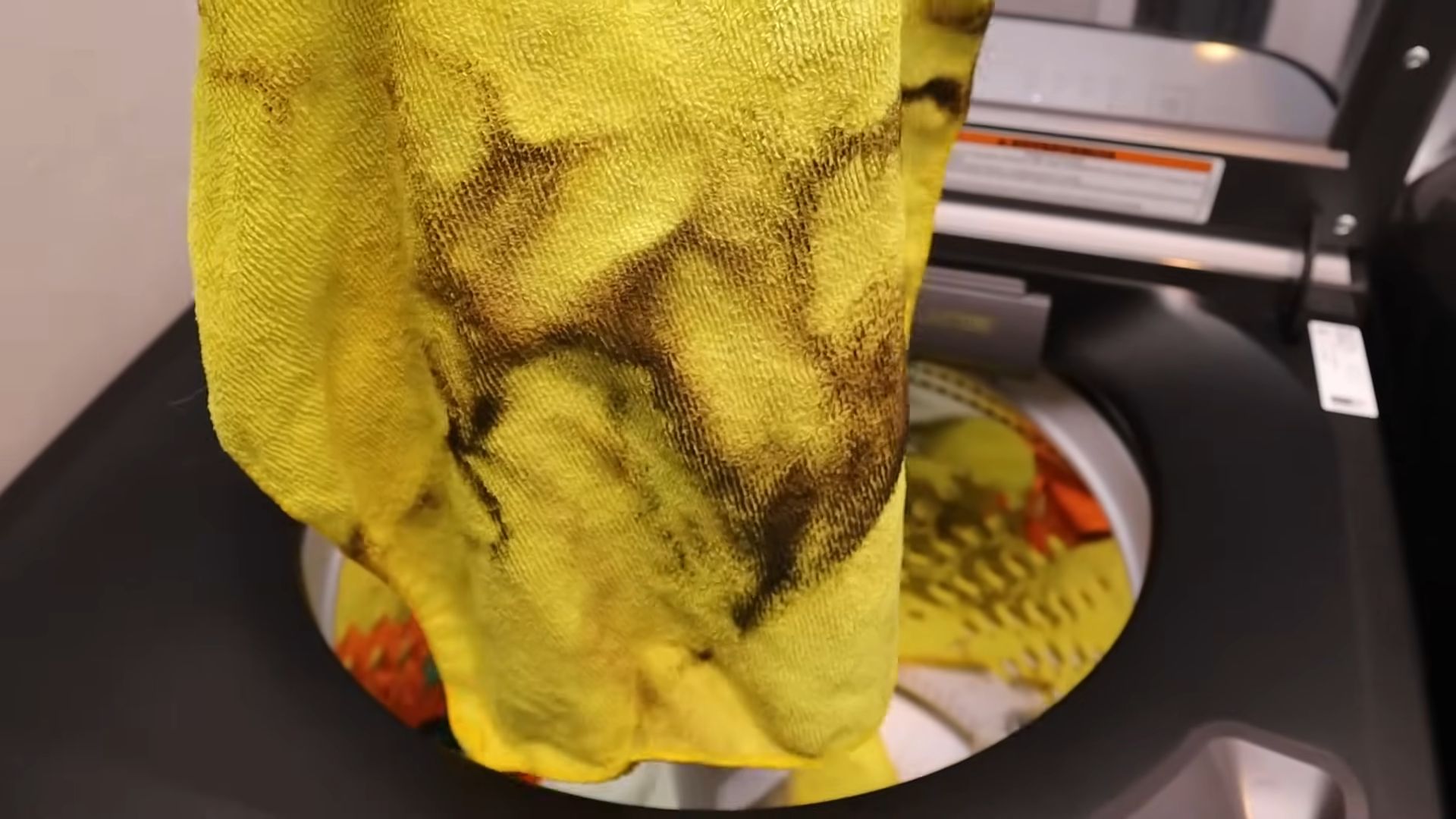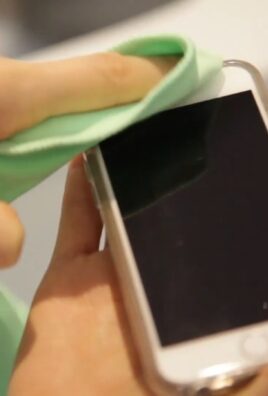Wash Microfiber Cloths Properly: Are your microfiber cloths losing their magic? Do they feel less absorbent and more like they’re just smearing dirt around? Don’t toss them just yet! I’m here to tell you that with a few simple tricks, you can revive those hardworking cloths and keep them performing like new.
Microfiber cloths have become indispensable in our cleaning routines, and for good reason. Their ability to trap dust, dirt, and grime is unmatched. But did you know that the secret to their effectiveness lies in the tiny, split fibers that create a vast surface area? When these fibers become clogged with dirt, detergent residue, or fabric softener, they lose their cleaning power.
Historically, cleaning cloths were made from natural fibers like cotton or linen. Microfiber, a relatively modern invention, revolutionized cleaning with its superior absorbency and cleaning capabilities. But unlike their predecessors, microfiber cloths require special care to maintain their unique properties.
That’s why I’m sharing my tried-and-true methods to wash microfiber cloths properly. You’ll learn the dos and don’ts of washing, drying, and storing these essential cleaning tools. By following these simple steps, you’ll not only save money by extending the life of your cloths but also ensure that they continue to deliver sparkling clean results every time. Let’s dive in and get those microfiber cloths back to their best!

How to Keep Your Microfiber Cloths Like New: A DIY Washing Guide
Hey there, fellow cleaning enthusiasts! I’m here to share my tried-and-true method for washing microfiber cloths. We all know how amazing these little guys are for cleaning, but they can quickly lose their effectiveness if not cared for properly. This guide will walk you through everything you need to know to keep your microfiber cloths soft, absorbent, and ready for any cleaning task.
Why Proper Washing Matters
Microfiber cloths are made of incredibly fine fibers that trap dirt, dust, and grime. When you wash them, you need to release all that gunk without damaging the delicate fibers. Using the wrong detergents or washing techniques can clog the fibers, making them less effective and even scratchy. Trust me, I’ve learned this the hard way!
What You’ll Need
Before we dive in, let’s gather our supplies. Having everything ready will make the process smooth and efficient.
* Microfiber cloths: Obviously! Sort them by color and the type of cleaning they were used for (e.g., kitchen, bathroom, car).
* Mild liquid detergent: Look for a detergent that’s free of dyes, perfumes, and fabric softeners. These additives can coat the fibers and reduce their absorbency. I personally love using a free and clear detergent.
* Laundry bag (optional): This is great for protecting delicate cloths or preventing them from getting lost in the wash.
* White vinegar (optional): Vinegar can help remove odors and residue.
* Baking soda (optional): Baking soda is another great odor absorber and can help brighten whites.
* Washing machine: A standard washing machine will do the trick.
* Clothes dryer (optional): You can air dry or tumble dry on low heat.
Sorting Your Microfiber Cloths
This is a crucial step! You don’t want to wash your car cleaning cloths with your kitchen cloths, trust me.
* Separate by color: Wash light-colored cloths with other light colors and dark-colored cloths with other dark colors. This will prevent color bleeding.
* Separate by use: Keep cloths used for different purposes separate. For example, cloths used for cleaning the bathroom should be washed separately from cloths used for dusting furniture. This prevents cross-contamination.
* Heavily soiled cloths: If you have cloths that are heavily soiled with grease, oil, or other stubborn substances, consider pre-treating them or washing them separately.
Pre-Treating Stains (If Necessary)
Sometimes, your microfiber cloths might have some stubborn stains that need a little extra attention. Here’s how I tackle them:
* Grease and oil: Apply a small amount of dish soap directly to the stain and gently rub it in. Let it sit for a few minutes before washing.
* Dirt and grime: Rinse the cloth under warm water to remove loose dirt. You can also use a soft brush to scrub away any stubborn particles.
* Other stains: For other types of stains, you can try using a stain remover specifically designed for the type of stain you’re dealing with. Always test the stain remover on a small, inconspicuous area of the cloth first to make sure it doesn’t cause any discoloration.
Washing Your Microfiber Cloths: Step-by-Step
Alright, let’s get to the main event! Here’s my step-by-step guide to washing your microfiber cloths:
1. Load the washing machine: Place the sorted microfiber cloths into the washing machine. Don’t overload the machine, as this can prevent the cloths from getting properly cleaned. I usually fill the machine about halfway.
2. Add detergent: Add a small amount of mild liquid detergent to the washing machine. I usually use about half the amount recommended for a normal load of laundry. Remember, less is more! You don’t want to leave any residue on the cloths.
3. Add vinegar or baking soda (optional): If you want to add vinegar or baking soda, now’s the time. Add about 1/2 cup of white vinegar to the fabric softener dispenser or 1/2 cup of baking soda directly to the washing machine drum.
4. Select the wash cycle: Choose a gentle or delicate wash cycle with cold or warm water. Hot water can damage the fibers of the microfiber cloths.
5. Start the washing machine: Start the washing machine and let it run its course.
6. Rinse thoroughly: Once the wash cycle is complete, make sure the cloths are thoroughly rinsed. If you’re concerned about detergent residue, you can run an extra rinse cycle.
Drying Your Microfiber Cloths
Now that your cloths are clean, it’s time to dry them. You have two options: air drying or tumble drying.
* Air drying: Air drying is the gentlest option and is my preferred method. Simply hang the cloths on a clothesline or drying rack and let them air dry completely. This can take a few hours, depending on the humidity.
* Tumble drying: If you’re in a hurry, you can tumble dry the cloths on low heat. However, be careful not to overheat them, as this can damage the fibers. Also, avoid using dryer sheets, as they can leave a residue on the cloths.
Things to Avoid
To keep your microfiber cloths in tip-top shape, here are a few things to avoid:
* Fabric softeners: Fabric softeners coat the fibers and reduce their absorbency.
* Bleach: Bleach can damage the fibers and cause them to break down.
* High heat: High heat can melt the fibers and make the cloths less effective.
* Washing with lint-producing items: Avoid washing microfiber cloths with items that produce a lot of lint, such as towels or fleece blankets. The lint can get trapped in the fibers and make the cloths less effective.
Storing Your Microfiber Cloths
Once your microfiber cloths are clean and dry, it’s important to store them properly to keep them in good condition.
* Fold or roll the cloths: Folding or rolling the cloths helps to keep them organized and prevents them from getting wrinkled.
* Store in a clean, dry place: Store the cloths in a clean, dry place, such as a drawer or cabinet. Avoid storing them in damp or humid areas, as this can lead to mildew growth.
* Keep them separate from other cleaning supplies: Keep the cloths separate from other cleaning supplies to prevent cross-contamination.
Extra Tips and Tricks
Here are a few extra tips and tricks that I’ve learned over the years:
* Wash new microfiber cloths before using them: This will remove any loose fibers or manufacturing residue.
* Don’t use too much detergent: Using too much detergent can leave a residue on the cloths, making them less effective.
* Rinse the cloths thoroughly: Make sure the cloths are thoroughly rinsed to remove all traces of detergent.
* Air dry or tumble dry on low heat: Avoid using high heat, as this can damage the fibers.
* Replace your microfiber cloths regularly: Over time, microfiber cloths will lose their effectiveness. Replace them every few months or when they start to show signs of wear and tear.
Dealing with Lingering Odors
Sometimes, even after washing, your microfiber cloths might retain some lingering odors. Don’t worry, I’ve got you covered!
* Vinegar soak: Soak the cloths in a solution of equal parts water and white vinegar for a few hours before washing. This will help to neutralize odors.
* Baking soda soak: Soak the cloths in a solution of water and baking soda for a few hours before washing. This will also help to absorb odors.
* Sunlight: Hang the cloths outside in direct sunlight. Sunlight is a natural disinfectant and can help to kill odor-causing bacteria.
Reviving Old Microfiber Cloths
If you have some old microfiber cloths that have lost their absorbency, don’t throw them away just yet! You might be able to revive them.
* Boiling: Boil the cloths in a pot of water for about 15 minutes. This will help to open up the fibers and remove any trapped dirt or residue. Be careful not to burn yourself!
* Vinegar rinse: Rinse the cloths in a solution of water and white vinegar. This will help to remove any remaining detergent residue and restore their absorbency.
Microfiber Cloths for Specific Tasks
Different types of microfiber cloths are better suited for different tasks. Here’s a quick guide:
* General cleaning: Use a general-purpose microfiber cloth for everyday cleaning tasks, such as dusting, wiping surfaces, and cleaning spills.
* Glass cleaning: Use a smooth, tightly woven microfiber cloth for cleaning glass and mirrors. This will help to prevent streaks.
* Car cleaning: Use a plush, absorbent microfiber cloth for washing and drying your car. This will help to prevent scratches.
*

Conclusion
So, there you have it! Mastering the art of washing microfiber cloths properly is not just about cleanliness; it’s about extending the life of your cleaning arsenal and ensuring optimal performance every single time you reach for one. Think of it as an investment in your cleaning routine, saving you money in the long run by preventing premature wear and tear on these invaluable tools.
Why is this DIY trick a must-try? Because it’s simple, effective, and avoids the common pitfalls that lead to damaged and ineffective microfiber cloths. We’ve all been there – a once-fluffy and absorbent cloth that’s now stiff, greasy, and practically useless. By following these guidelines, you’ll avoid that fate and keep your microfiber cloths working like new.
Beyond the basic method, there’s room for personalization. For heavily soiled cloths, consider adding a pre-soak in a solution of warm water and a tablespoon of borax. This can help loosen stubborn dirt and grime before washing. If you’re concerned about lingering odors, a few drops of essential oil (like tea tree or lavender) added to the wash can provide a refreshing scent boost. Just be sure to choose an oil that won’t leave a residue.
Another variation to consider is hand-washing, especially for smaller batches or delicate microfiber cloths. Simply fill a basin with warm water and detergent, gently agitate the cloths, rinse thoroughly, and air dry. This method offers greater control and can be particularly beneficial for cloths used on sensitive surfaces.
Remember, the key is to avoid fabric softeners, bleach, and high heat. These can all damage the fibers and reduce the effectiveness of your microfiber cloths. Stick to gentle detergents, cold or warm water, and air drying whenever possible.
We’re confident that by implementing these techniques, you’ll notice a significant improvement in the lifespan and performance of your microfiber cloths. No more streaks, no more lint, just sparkling clean surfaces!
Now, it’s your turn! We encourage you to try this DIY trick and see the difference for yourself. Don’t just take our word for it – experience the satisfaction of using perfectly clean and effective microfiber cloths. And most importantly, share your experience with us! Let us know in the comments below how this method worked for you, any variations you tried, and any tips you’ve discovered along the way. Your feedback is invaluable and helps us all learn and improve our cleaning routines. Let’s build a community of microfiber cloth washing experts!
Frequently Asked Questions (FAQs)
1. Why is it so important to wash microfiber cloths differently than regular cloths?
Microfiber cloths are made of incredibly fine synthetic fibers, typically a blend of polyester and polyamide. These fibers have a unique structure that allows them to trap dirt, dust, and grime much more effectively than traditional cotton cloths. However, this same structure makes them susceptible to damage from certain washing practices. Fabric softeners, for example, coat the fibers and reduce their absorbency. Bleach can weaken the fibers and cause them to break down. High heat can melt or distort the fibers, rendering them less effective. Washing microfiber cloths properly ensures that these delicate fibers remain intact and continue to perform optimally.
2. Can I wash microfiber cloths with other types of laundry?
It’s generally best to wash microfiber cloths separately from other types of laundry, especially those that produce lint. Microfiber cloths are notorious for attracting lint, and washing them with towels or other lint-prone items can leave them covered in fuzz. If you must wash them with other items, choose lint-free fabrics like synthetic clothing or other microfiber items. Also, avoid washing them with heavily soiled items, as the microfiber cloths may absorb the dirt and grime.
3. What type of detergent is best for washing microfiber cloths?
A mild, liquid detergent is the best choice for washing microfiber cloths. Avoid detergents that contain fabric softeners, bleach, or dyes. Look for detergents that are specifically designed for delicate fabrics or those labeled as “free and clear.” Powdered detergents can sometimes leave a residue on the fibers, so liquid detergents are generally preferred. A small amount of detergent is all you need – using too much can leave a soapy residue on the cloths.
4. What water temperature should I use to wash microfiber cloths?
Cold or warm water is ideal for washing microfiber cloths. Hot water can damage the fibers and cause them to shrink or lose their shape. Cold water is often sufficient for lightly soiled cloths, while warm water can help to remove more stubborn dirt and grime. Always check the care label on your microfiber cloths for specific temperature recommendations.
5. Can I put microfiber cloths in the dryer?
Air drying is the best option for microfiber cloths. High heat from the dryer can melt or distort the fibers, reducing their effectiveness. If you must use a dryer, use the lowest heat setting and avoid over-drying. Remove the cloths from the dryer while they are still slightly damp and allow them to air dry completely. You can also hang them on a clothesline or drying rack.
6. How often should I wash my microfiber cloths?
The frequency of washing depends on how often you use your microfiber cloths and how soiled they become. Heavily used cloths should be washed after each use. Lightly used cloths can be washed after several uses. It’s always better to err on the side of washing too often than not often enough, as dirty cloths can spread dirt and grime rather than removing it.
7. My microfiber cloths are still greasy after washing. What can I do?
If your microfiber cloths are still greasy after washing, try pre-soaking them in a solution of warm water and a tablespoon of dish soap or borax. This can help to loosen the grease and grime before washing. You can also try washing them again with a slightly stronger detergent or adding a cup of white vinegar to the wash cycle. Be sure to rinse the cloths thoroughly to remove any detergent or vinegar residue.
8. How can I remove stubborn stains from my microfiber cloths?
For stubborn stains, try pre-treating the cloths with a stain remover before washing. You can also make a paste of baking soda and water and apply it to the stain. Let it sit for a few minutes before washing. Avoid using harsh chemicals or bleach, as these can damage the fibers. For particularly difficult stains, you may need to repeat the process several times.
9. How long do microfiber cloths last?
With proper care, microfiber cloths can last for several years. However, their lifespan will depend on how often they are used and how well they are cared for. Over time, the fibers may start to break down, and the cloths may become less effective. When this happens, it’s time to replace them.
10. Can I use microfiber cloths on all surfaces?
Microfiber cloths are generally safe to use on most surfaces, but it’s always a good idea to test them on an inconspicuous area first. Avoid using them on delicate surfaces that are easily scratched, such as polished wood or painted surfaces. Always use a clean microfiber cloth to avoid transferring dirt and grime from one surface to another.




Leave a Comment